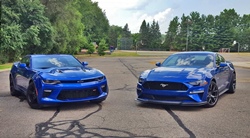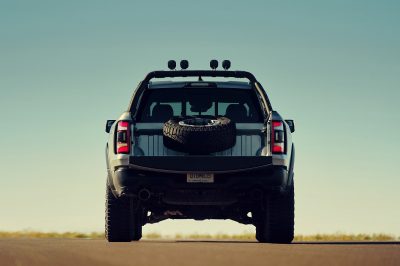While the world is intensely focused on the 700 plus horsepower Ram TRX that will be making its way to showrooms next year, we were curious to find out what happened to the concept? No, not the hellcat powered concept truck that preceded the current Jurassic inspired titan that we have come to know and love, but rather the original T-Rex concept that preceded both of them. Buckle up for this inaugural look into concepts of the past, how they played a part (if any) in some of the hottest offerings in the market today, and what ultimately became of them after their tour on the show circuit ended?
In this installment, we peel back the layers, and take a look at what happened to the Dodge T-Rex concept, which offered buyers in the 1990s a glimpse at what an all out off-road offering of the period could look like. The T-Rex made its debut at the 1997 SEMA show in Las Vegas, and in a way, it was already ahead of its time due to its layout. In an age where the 6×6 craze was a mere figment of the imagination, the T-Rex might have seemed like quite the shock to showgoers when it thundered into that year’s SEMA event. Dodge engineers used a stock Ram 3500 one ton model for the conversion, but things go in some very wild directions once you look past the core DNA. The concept was powered by an 8.0 liter V10 engine that also shared some of its family heritage with the Dodge Viper, but here in the Ram, it was designed for work, and as a result, it lacked some of the more performance focused upgrades seen in the two door sports car. But don’t mistake it for being a paper tiger, because Dodge reps claimed the T-Rex made 497 horsepower and 593 lb-ft of torque, with the engine being paired to a four speed automatic (remember when those were state of the art?)
The real stars of the show though were the rear wheels themselves, with Dodge engineers opting for a novel 6×6 arraignment that would not only improve traction, but also maneuverability by reducing the truck’s width. To help modulate the power, engineers equipped the T-Rex with two transfer cases, one that was mounted conventionally by the transmission housing, and the second being nestled in between the rear axles. Those rear axles were permanently locked into four wheel drive, with full 6×6 capability being achieved when the driver activated the front axle. This dinosaur inspired beast certainly had the capability and equipment to back up its claims, but execs at the time never gave it the green light for production, and it was quietly swept under the rug after its SEMA appearance.
So can select elements of the T-Rex be perhaps seen in the current TRX? The answer is a mixed bag depending on who you ask. Mechanically, the two are the polar opposites of each other, with the 1990s era T-Rex preferring to use its novel rear axle layout and V10 engine to get the job done, versus the current TRX which uses a state of the art four wheel drive system and a supercharged V8 to thrash its way through the trails. However, it appears that perhaps FCA engineers used the core idea of the original to go in a unique direction for the TRX. The lack of a 6×6 style wheel arraignment is no surprise, considering that it would have created a massive expense for FCA not only in regards to extra plant tooling, but also the extra training needed for workers to build it. Cost was also a key hurdle for the original T-Rex, with Chrysler at the time being on the verge of entering the ultimately ill-fated merger with Mercedes-Benz (It would ultimately do so in 1998.) At best, the T-Rex could be viewed as a proverbial crystal ball into the direction where the performance truck market would go, which seemed farfetched to some. This was especially true when many automakers back then were focused on creating performance truck models that were mainly focused on providing pavement only muscle, with the Ram SRT-10 being the most extreme example of this.
Circa 2006: @Dodge T-REX concept truck is seen lurking around building 20. And you thought dinosaurs were extinct! #tbt pic.twitter.com/xLHssGNa
— Sinclair College (@SinclairCC) January 3, 2013
As for the T-Rex itself, it appeared to escape the crusher after its SEMA appearance, with Sinclair Community College in Dayton, Ohio releasing a Twitter post that highlighted the concept’s visit to Building 20, which occurred sometime in 2006. The trail goes cold after that, but we suspect that the T-rex is perhaps in storage at FCA, and with the current TRX preparing to make its way to dealerships, this old concept could perhaps re-emerge and greet the world once again after a long slumber.

Carl Malek has been an automotive journalist for over 10 years. First starting out as a freelance photographer before making the transition to writing during college, his work has appeared on numerous automotive forums as well as websites such as Autoshopper.com.
Carl is also a big fan of British vehicles with the bulk of his devotion going to the Morgan Motor Company as well as offerings from Lotus, MG, and Caterham. When he is not writing about automobiles, Carl enjoys spending time with his family and friends in the Metro Detroit area, as well as spending time with his adorable pets.











